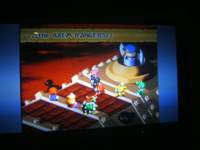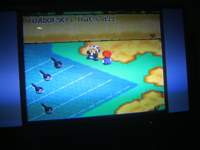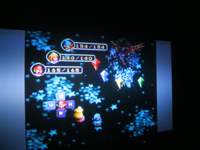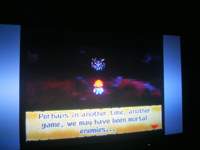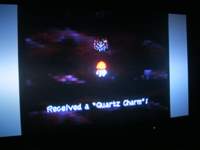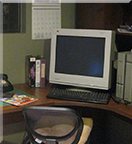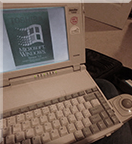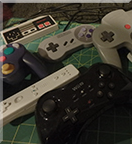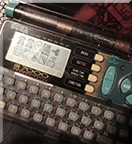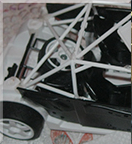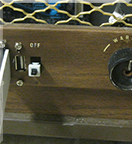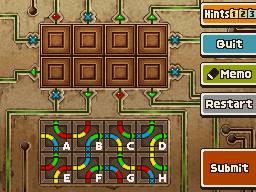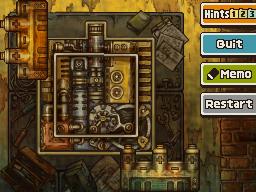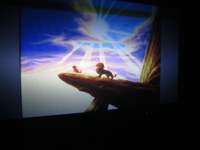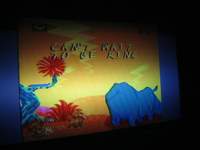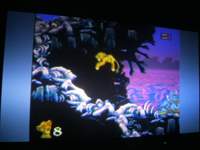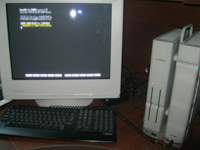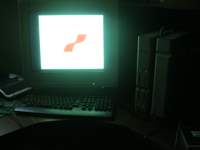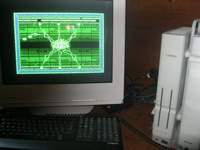Finished Echo (PC, Windows)
This is a Danish indie game I first played at a demo booth at PAX last year. It made me really happy to find out that the full version was released.
This is a stealth-action game where you are pitted against copies of yourself, and there is a day-night cycle. During the day, the types of actions you perform are recorded. Come the next day, those copies will re-play an approximation of what you did. Therefore, you want to be very conscious of what you do during the day, and use the night-time wisely.
Examples of recorded behaviors: running, sneaking, yelling, eating grapes, playing musical instruments, bludgeoning, shooting a firearm.
There is something terrifying yet rewarding in going full Rambo in a stealth game
Story: The main character has been awoken after a deep sleep. Long ago, her friend Foster was about to be killed, so she put a digitized copy of him into a small red box. To be resurrected later, once the technology exists. She travels to a weird planet that appears to hold the secret to resurrecting him out of the box.
The visual style of this game is kind of ridiculous. Everything looks like a geometry instancing demo with all kinds of shiny things. But it works for this game. If nothing else it looks really unique and distinctive. It is not Mass Effect or Destiny or Dead Space. Would play an Echo 2.
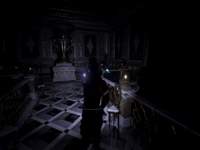
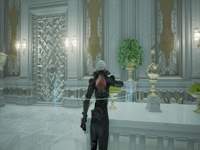
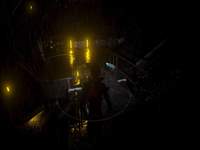


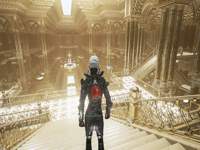
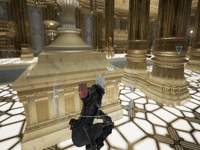


Finished Kirby Super Star (SNES)
Kirby Super Star consists of '9-games-in-one'. 'Finished' here means '100% completion'
The concept and envrionments of Kirby are so darn cute I want to hate it but I just can't.
The game modes are different enough from each other to make things interesting:
Spring Breeze - Simple platformer
Dyna Blade - Slightly more challenging platformer
Great Cave Offensive - Treasure hunt! Look for secret passageways etc
Revenge of Meta Knight - Fast moving platformer
Milky Way Wishes - Metroidvania ish
Arena- Beat all 20 bosses in succession. 5 health refills available
And three small 'coffee break' games.
Why hello
http://e3.nintendo.com/…/kirby-for-nintendo-switch-working…/
Q: If Kirby ate you, what ability would he gain?
In before "debilitating depression" or "alcoholism"
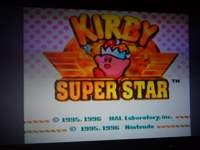
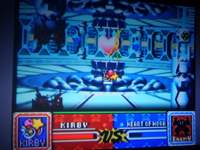
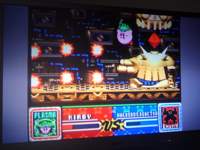



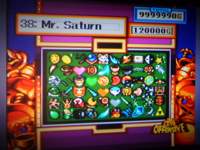

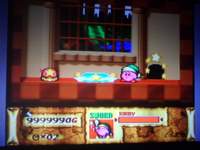
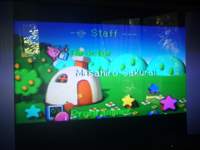
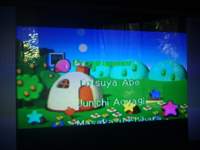
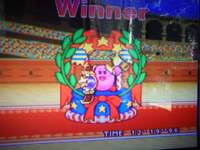
My first time playing this game on real hardware.
I treat the SHARP and 90s game consoles very differently.
The SNES I'll carry it any which way. Power it off unsafely, leave it on for days, use the reset in an angry manner, be negligent with carts and so forth. Also, the fat PS2 has been taken apart and "repaired" (ask me in person if you want more details about this).
However, the SHARP is different. I move it very carefully and keep it upright. Touch nothing unless necessary. All disks must be either in the system, or in protective cases inside boxes. It must always be transported by me, in my car, in a cool temperature. And, minimize the number of FDD transactions.
That last one is the biggest one and it actively affects gameplay. I play in order to minimize the number of FDD reads and writes.
The death penalty in Lagoon is not high in terms of gameplay setbacks, but it is high in terms of disk switching. Dying will reset the game back into the starting area (disk 1), from which you will typically need to insert disk 2 or 3 to resume your save- that's 2 disk swaps. And starting the game from boot requires 2 swaps across both FDD0 and FDD1. (boot + data1 --> user + data1--> user + data2). And then of course 1 save == 1 write.
Put it all together, and you want to have few, long playthroughs. Try not to save too much, but also really try not to die. Don't unnecessarily venture into areas which are stored on a different disk.
Is all of this strictly necessary? Maybe, maybe not. Is this founded? I think so.
All the while playing through Lagoon there is this nagging feeling in the back of my head like my days playing it are numbered.
Like the raw number of FDD transactions it can do is finite. While this is true for any piece of computer hardware ever, there is reason to believe it's much more imminent on this machine. With every seek, every read, every grinding noise that comes out of the FDD- that brings it closer to no longer working. I was especially nervous at the in-game disk switching prompts (besides the boot disk and saved game disk, the game is spanned across 3 data disks). All this was despite the fact this unit has had capacitors replaced and that sort of usual stuff. Eventually, this machine will break down and then the only option will be an emulator compatible with contemporary PCs.
The other problem is media and loading it. This is my second copy of Lagoon. The first copy I obtained several years ago. When I tried to boot it, the boot disk showed CRC fail. The data disks couldn't be read. While this was a disappointment, it was not altogether a surprise. This happens with old disks and FDDs from that time period. It's not even uncommon now. Recently when I was playing with the TRS-80 with my coworker, we tried loading some games from the late 80s on 5-1/4" floppies. We had about a 10% success rate and blew out one FDD where it started to smoke so we unplugged it for the fire hazard.
I'm extremely lucky for having acquired fully working games with fully working hardware. There are a bajillion things that can go wrong with 5 1/4" disks stored away for 30 years shipped from the other side of the world. If I try and play this game again in 5 or 10 years, I might not be able to. I have a bad feeling about this computer. It has already started happening where it will power on, render corruption, fail to boot into Human68k. I'm going to stay positive, and reflect on the good times on this platform.
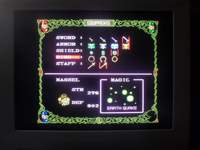
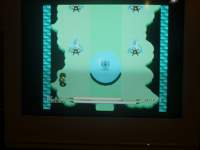
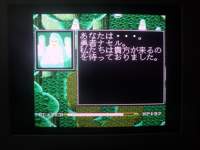


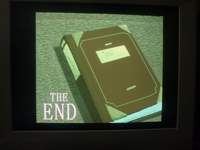
Boot and resume save at gold cave
Ending credits
Finished Pilotwings (SNES)
Is it possible to make a game entirely in Mode 7? Yes
Pilotwings is very earlygen SNES. It showcases the capabilities of Mode 7 graphics (texture-mapped plane which can be scaled/rotated/perspective transformed) to get something of a faux 3D. There are six flight modes: small plane, skydiving, rocketbelt (like a jetpack), hang-glider, helicopter, and some thing like a wing suit.
Defeating the first four courses unlocks the 'expert' mode, where the courses have some difficult twist (ice and snow, night, strong winds, etc) plus other difficulty adjustments. Clearing all expert courses clears the game
Too bad flight simulators are a dead genre. ("something something Microsoft Flight Simulator", Microsoft Flight Simulator is older than I am) ("something something indie games" . okay) Unfortunately I think that to make a flight simulator marketable nowadays, it needs to have combat elements incorporated. Thinking about it, the last-released flight sim I remember playing was Il-2 Sturmovik: Birds of Prey on Xbox 360 which had reasonable mainstream success. That one takes place in a war scenario obviously with the shooting mechanics you would expect.
Pilotwings did not make the cut for SNES classic but maybe the IP will get picked up for the Switch.



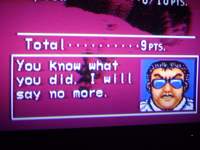

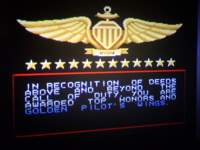


Finished Professor Layton and the Last Specter (3DS),
and the bonus game that the USA version ships with, Professor Layton- Little London
This is the fourth installment in the Professor Layton series. The puzzles seem, on average, easier (maybe too easy?) compared to previous installments. But there is enough variety to keep it interesting, and the side puzzles like the model train set are fun and worthwhile.
Little London looks and plays a lot like Harvest Moon, if you isolate it down to all of the cutesy character interaction and none of the turnip farming.
I have a big problem with Little London.
The mechanics of the game are as follows: you have two stats, Wealth and Happiness, whereby Wealth is accrued from working at jobs and fulfilling requests from the various townspeople; Happiness is acquired also by fulfilling requests, however-- when you buy anything that costs X, X/2 will be added to your Happiness. Therefore, after unlocking the highest Wealth-giving quests in the game (and also the train ticket job), it's just a matter of buying expensive things over and over and until you reach the Happiness desired. Optionally, you can sell things (for less than was paid for) and buy them again to streamline this grind late-game.
Is this the kind of value system we want to be broadly promoting to people? Materialism??
Your character begins the game with a home and basic needs met. The Wealth is just for buying frivolous things. New furnishings, new clothes. Cosmetic accessories. These are great, sure, but to directly, numerically link the resulting happiness they provide with how much they cost feels totally unrealistic. Am I going to be ten times happier with a $200 curtains compared to $20? Should I really spend $5000 on a golden stuffed animal? There are some material things I've purchased which made me *less* happy, for example the Lion King for Super Nintendo.

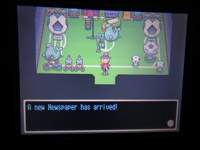

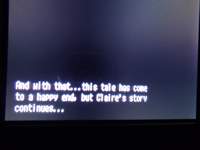

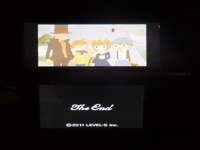
I loaded the system disk into my computer and started the game. First couple quests things in the town to unlock the starter equipment.
Graphics and sound are good.
It can load saved games (of which, the previous owner left a couple... ) And save. The 30-year-old magnetic tape came through. Minimal grinding and churning !!
The gold cave is a maze but I have my old strategy guide.
Ogre Battle is one of the best RTS franchises of all time. Which is surprising since it is a console game. You play as army leader <your name here> organizing a rebellion against an evil empire. The game consists of micromanaging how your army units are formed, where they go, who they attack. For each character in a unit, you pick out equipment, formation and role. Battles themselves play out automatically according to what attack policy you use, but you can also interrupt the flow of battle to issue some commands.
What makes this game so great is the gameplay and level of polish. The gameplay is complicated enough to be immensely replayable, without feeling bogged down by too many shoehorned-in mechanics. The polish comes from the nice pre-rendered backgrounds in the battle scenes, character and spell animations with a lot of frames and a lot of variety. Ogre Battle 64 really nailed this type of art direction imo, but MotBQ is where it all started.
The in-battle and out-of-battle gameplay are very different from each other- it changes from this customizable turn based thing to your typical RTS with an overworld map. The closest other game I can think to compare it to is Bahamut Lagoon (NOT Lagoon different game)
The game has thirteen different endings depending on decisions- some picky, some irreversible- you make throughout.
A long time ago, I rented this game repeatedly but I wasn't able to beat it. Some jerk rented it after me and over-wrote my save. IIRC they also named the overwriting character "BUTTS" or something dumb.
Other related titles in this franchise are Tactice Ogre- of the same "Tactics" genre as Final Fantasy Tactics, Dynasty Warriors Tactics etc- and Ogre Battle 64: Person of Lordly Caliber
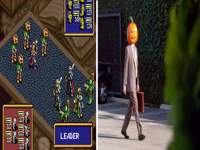

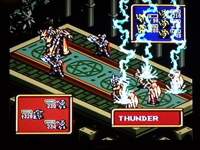
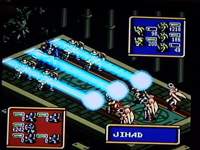

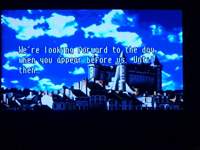
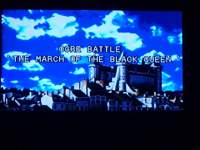
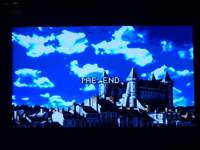

Finished Super Mario RPG (SNES)
Do you remember back when Nintendo's first party titles tried to push the limits of the current technology?
Since I had done the "finish all my Super Nintendo games I currently own" I bought this new one. This game was not technically new to me since I played it all the way through as a child but I wanted to re-visit it.
I'm of the opinion that this game is the spiritual precursor to Paper Mario. They share the same role-playing elements and comedic style. Before SMRPG- and not counting weird outlyer games like "Mario is Missing"- Mario was a side-scrolling platformer and that was basically it. This was a first in having a Mario game with a character-driven story, EXP and inventory management, and so on. It has a very disctinctive level of polish, and so I think Paper Mario went on to build on this idea later.
SMRPG- which is top-down isometric 2D- achieves a "3D-looking style" through pre-rendered 3D graphics and creative ways of having planes overlap each other. You would not guess that this game was for a platform optimized for copying 16x16 sprites since literally nothing appears to have square boundaries. So many things have curved, irregular edges and unusual types of blending. The sprites all look like shaded 3D models because they are (were). One other game that comes to mind which used these same techniques is Donkey Kong Country 1/2/3 but SMRPG has larger, more varied worlds and characters and so I think it represents a greater level of achievement.
Given the sizes of sprites and envrionment with the lack of repitition or content recycling, I have no idea how they were able to fit a game of this size into 32MB. Performance-wise it was one of only a handful of games that were accelerated by the SA-1 chip though.
The game uses QTEs in all fights which keep things from getting boring or too grind-y.
In this game someone from the Final Fantasy franchise makes an appearance. In this playthrough I beat Culex, an optional boss- for the first time. I can see why this was optional. This was harder than literally anything else in this game including the final boss.
